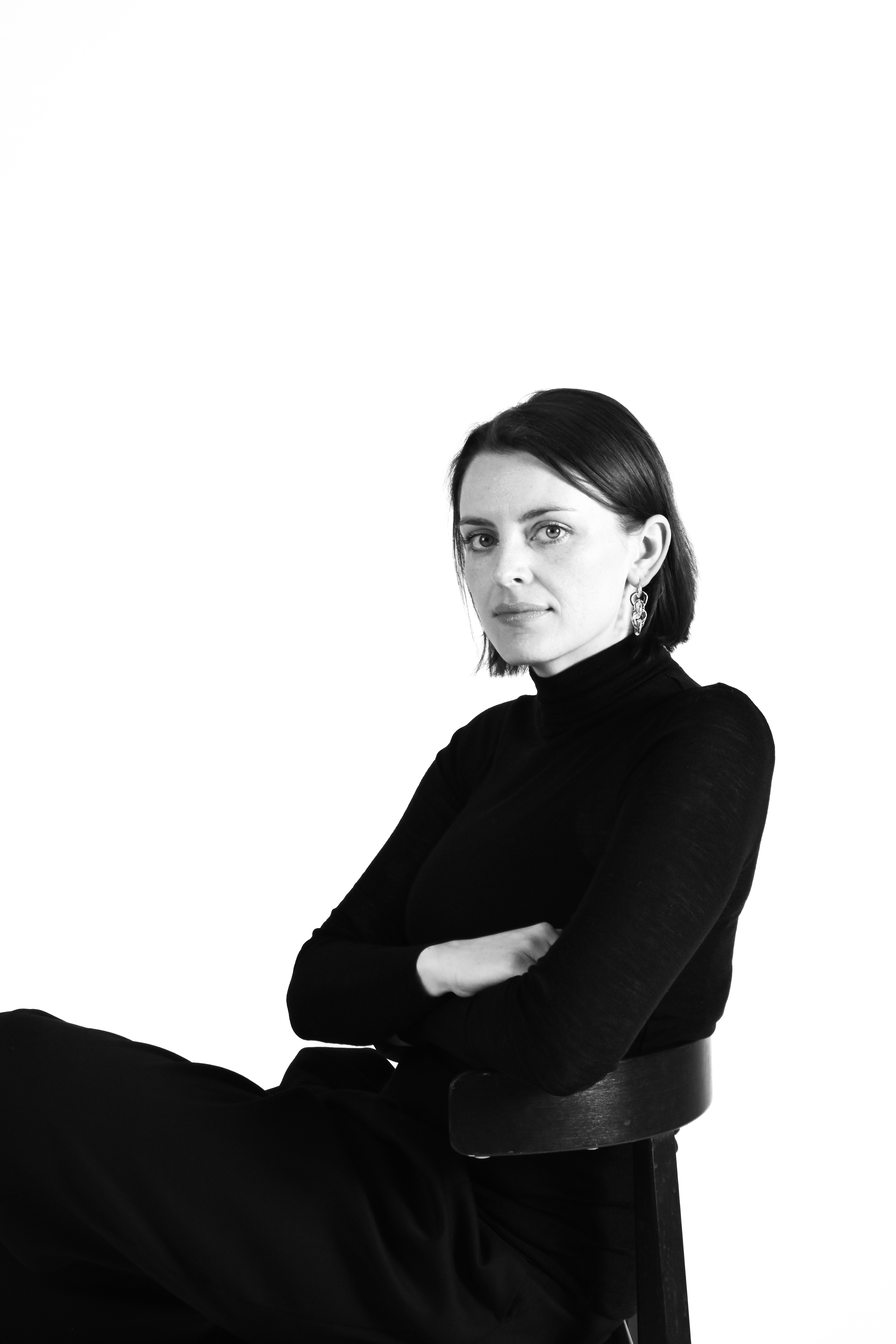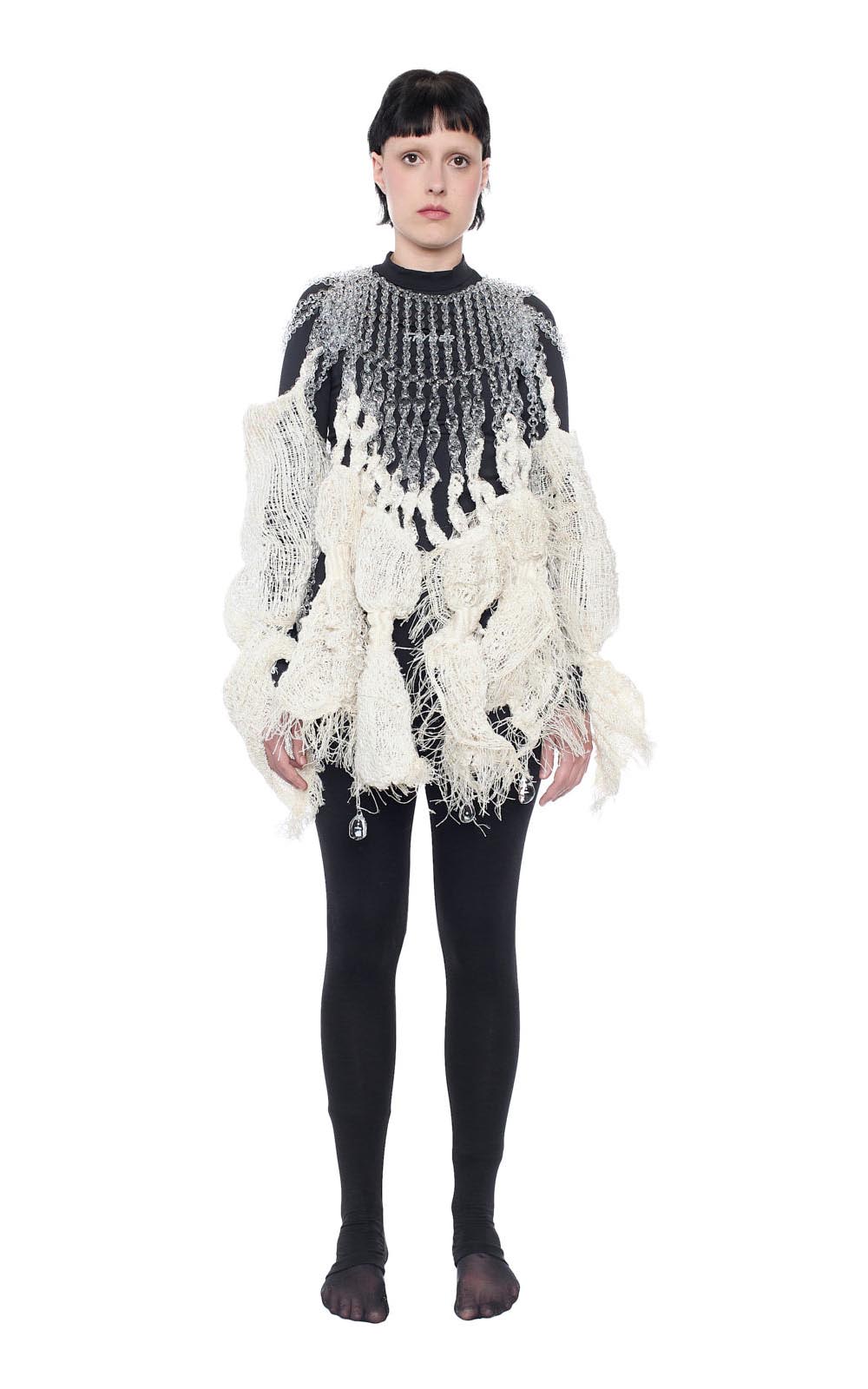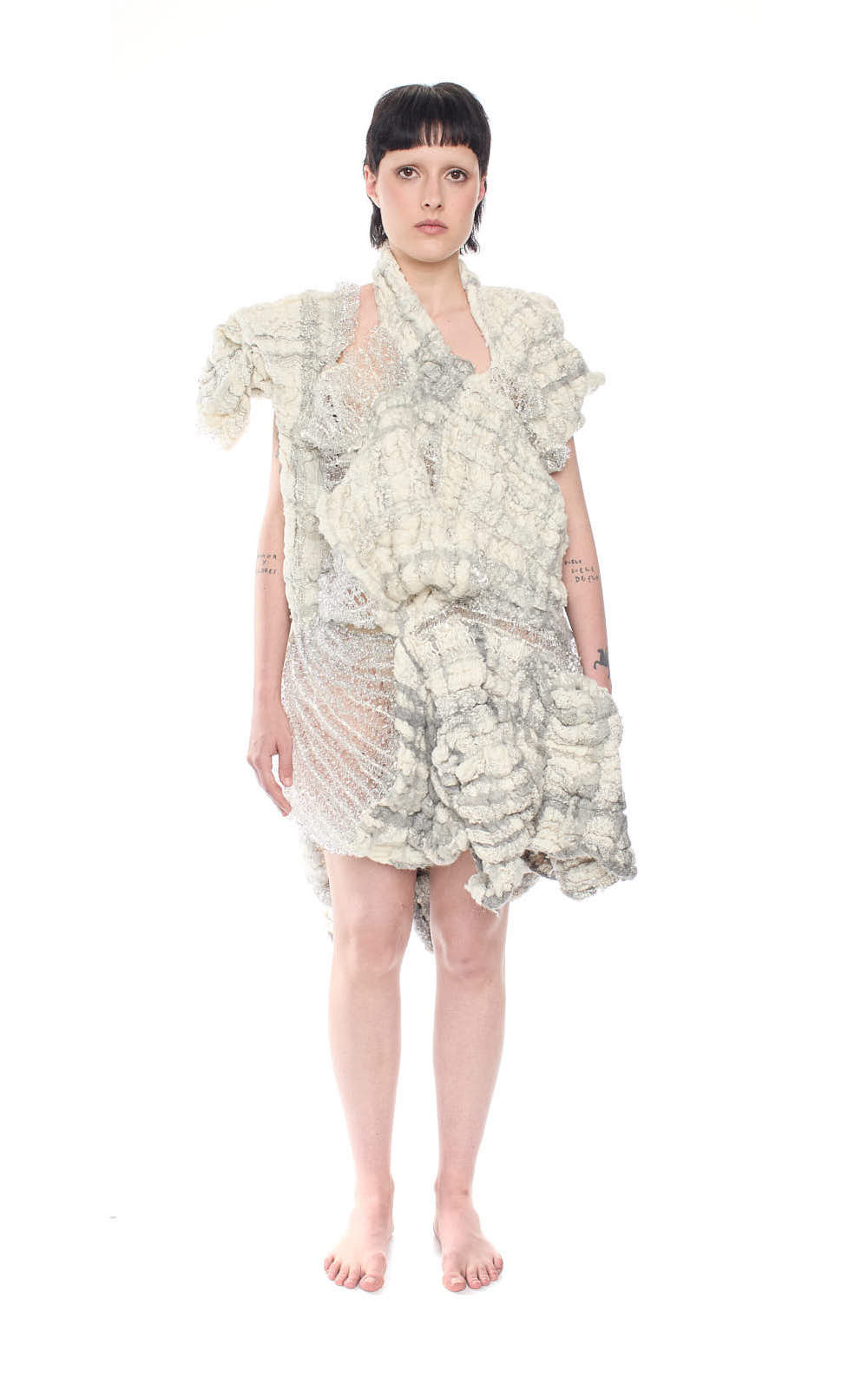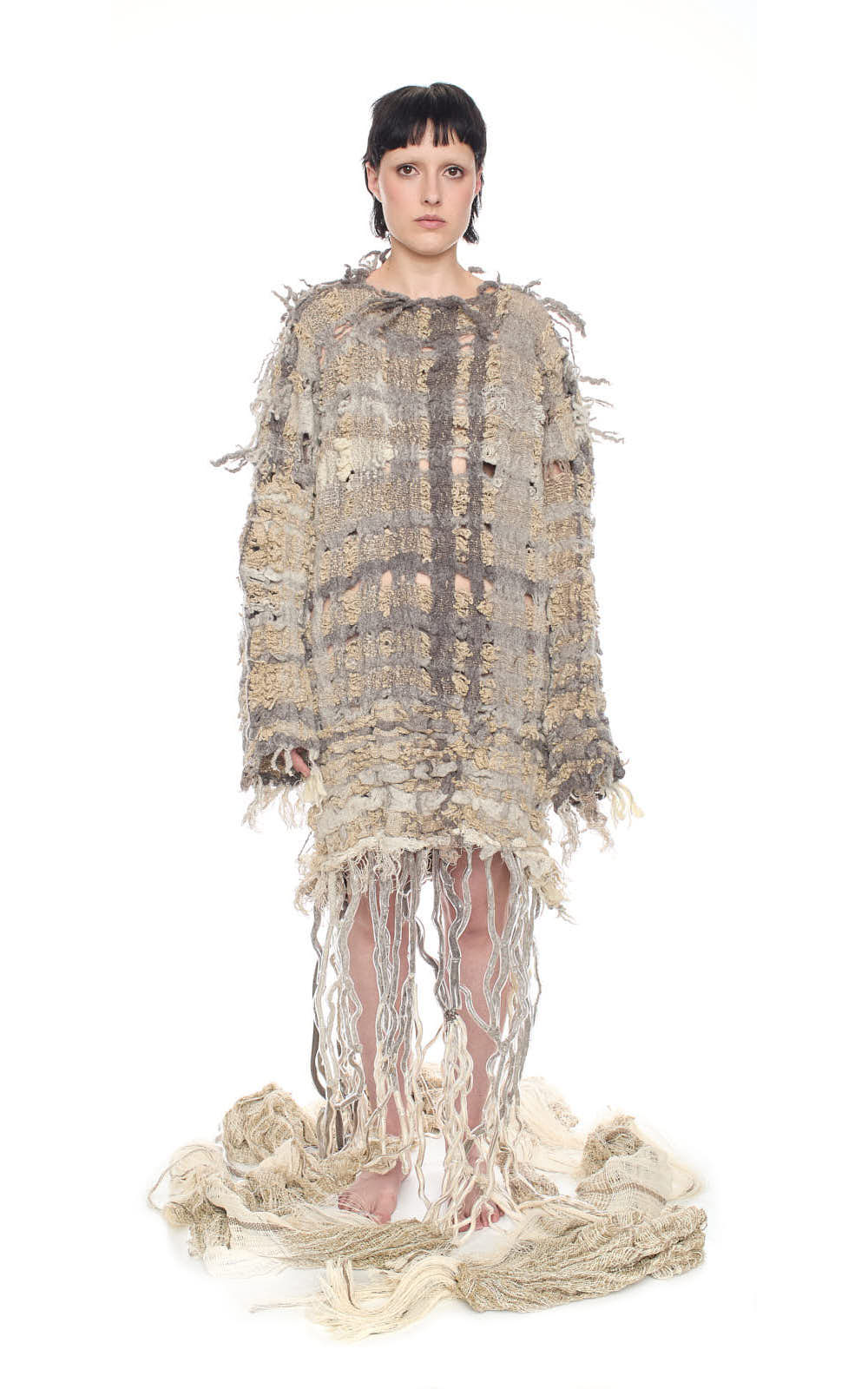
Belinda Gredig
Sweden
Urtica Dioica






The form is a convergence of nettle (as clarifying force) and glass – not only metaphorical representation but fluid modulation with agency. The material is not pressed into preconceived form. Instead, the maker and her line are spinning, spooling, threading, weaving, re-tensioning, binding, felting, melting, draping their way towards form.
Nettle is usually classified as either healing or pest plant; she finds herself similarly categorised as either textile or fashion designer. Choosing to work in the threshold of two disciplinary worlds has become her motivating force: to craft another space where multiple identities coexist, as in the Cabinet of Curiosities.
Hand-spun, energised yarn of local nettle, in different fibre nuances, are interlaced with natural shades of Merino, Alpaca and hemp. Uneven stiff silk threads, often considered waste from the outer cocoon, are complementing the range of warp threads used. Borosilicate glass is flameworked and combined with the weaves.
The form is a convergence of nettle (as clarifying force) and glass – not only metaphorical representation but fluid modulation with agency. The material is not pressed into preconceived form. Instead, the maker and her line are spinning, spooling, threading, weaving, re-tensioning, binding, felting, melting, draping their way towards form.
Nettle is usually classified as either healing or pest plant; she finds herself similarly categorised as either textile or fashion designer. Choosing to work in the threshold of two disciplinary worlds has become her motivating force: to craft another space where multiple identities coexist, as in the Cabinet of Curiosities.
Hand-spun, energised yarn of local nettle, in different fibre nuances, are interlaced with natural shades of Merino, Alpaca and hemp. Uneven stiff silk threads, often considered waste from the outer cocoon, are complementing the range of warp threads used. Borosilicate glass is flameworked and combined with the weaves.





